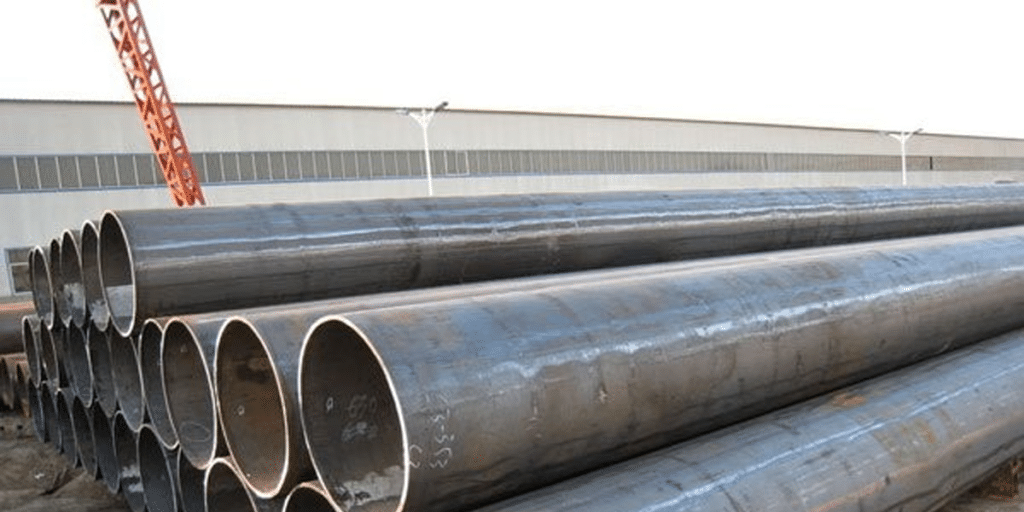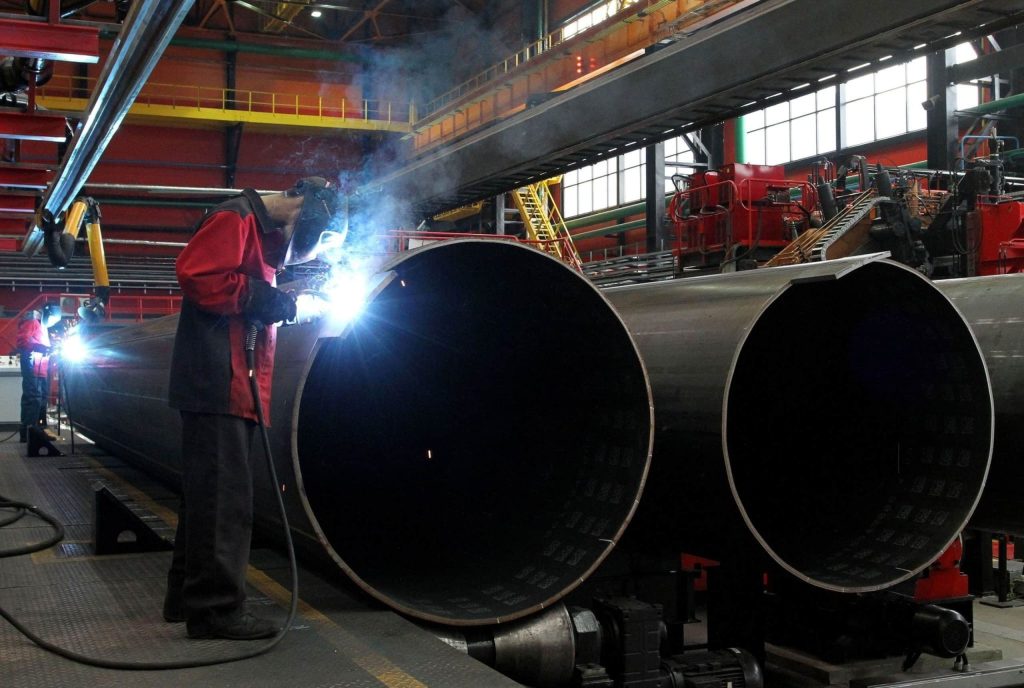- 1. Standard Overview: Differences in Positioning
- 2. Chemical Composition and Material Differences
- 3. Comparison of Mechanical Properties
- 4. Manufacturing and Testing Standards
- 5. Application Scenario Comparison
- 6. Procurement Recommendations and Risk Control
- 7. LONGMA’s Advantages: Securing Your Project Safety from the Source
In industrial boiler and heat exchanger systems, the selection of pipeline materials directly impacts equipment safety, durability, and operational efficiency. ASTM A53 Grade B and ASTM A106 Grade B are two of the most commonly used carbon steel pipe standards for high-temperature and high-pressure operating conditions. Both belong to the American standard pipe series, yet they differ significantly in manufacturing processes, chemical composition, temperature resistance, and application scenarios. This article provides an in-depth comparison from four dimensions—technical standards, mechanical properties, application fields, and procurement risks—to serve as an authoritative reference for engineering procurement professionals and design engineers.
Standard Overview: Differences in Positioning
ASTM A53 Grade B is a widely used carbon steel pipe standard, primarily designed for transporting medium-to-low temperature media such as water, gas, steam, and air. Per the ASTM A53/A53M standard, it is categorized into three types:
- Type E: Electric Resistance Welded (ERW) Pipes
- Type S: Seamless Pipes
- Type F: Furnace-Welded Pipes
Among these, ASTM A53 Grade B Type E (ERW welded pipes) are widely used in boiler auxiliary pipelines and low-pressure heat exchange systems due to their cost-effectiveness and excellent dimensional accuracy.
In contrast, ASTM A106 Grade B (standard designation: ASTM A106/A106M) is a seamless steel pipe standard specifically engineered for high-temperature service. It is extensively applied in petrochemical facilities, boiler main steam pipelines, and heat exchanger main circuits. Suitable for high-pressure systems with temperatures up to 450°C (approximately 850°F), it offers superior creep resistance and structural stability.
Chemical Composition and Material Differences
| Item | ASTM A53 Grade B | ASTM A106 Grade B |
| Carbon (C) | ≤ 0.30% | ≤ 0.30% |
| Manganese (Mn) | ≤ 1.20% | 0.29–1.06% |
| Sulfur (S) | ≤ 0.05% | ≤ 0.035% |
| Phosphorus (P) | ≤ 0.05% | ≤ 0.035% |
| Silicon (Si) | No requirement | ≥ 0.10% (enhances high-temperature strength) |
From a chemical composition perspective, ASTM A106 Grade B contains higher silicon content, which endows it with better high-temperature strength and oxidation resistance. This makes it more resistant to thermal stress and high-temperature corrosion in boiler and heat exchanger systems. Conversely, ASTM A53 Grade B has a simpler composition, resulting in lower manufacturing costs—making it more suitable for low-pressure or medium-temperature systems.
Comparison of Mechanical Properties
| Property Indicator | ASTM A53 Grade B | ASTM A106 Grade B |
| Tensile Strength | ≥ 415 MPa | ≥ 485 MPa |
| Yield Strength | ≥ 240 MPa | ≥ 275 MPa |
| Elongation | ≥ 20% | ≥ 20% |
The data shows that ASTM A106 Grade B has higher yield strength and tensile strength than ASTM A53 Grade B, providing a better safety margin when subjected to high-temperature and high-pressure environments. For heat exchanger tubes or boiler main steam pipes operating under continuous high-temperature conditions (e.g., in the petrochemical or power generation industries), ASTM A106 Grade B is clearly the more advantageous choice.
Manufacturing and Testing Standards
- Manufacturing Processes for ASTM A53 Grade B
ASTM A53 Grade B can be produced via either ERW (Electric Resistance Welding, Type E) or seamless hot-rolling (Type S) processes. The standard requirements include:
-
- Every pipe must undergo hydrostatic testing or ultrasonic testing (UT);
- Welds must be inspected via eddy current testing (ECT);
- Optional galvanization or anti-corrosion coatings are available, making it suitable for low-temperature transportation or exposed installations.
- Manufacturing Requirements for ASTM A106 Grade B
ASTM A106 Grade B is exclusively seamless pipe, and per the requirements of ASTM A106/A106M-19:
-
- Every pipe must undergo heat treatment (Normalizing or Annealing);
- Tensile, bending, and flattening testsmust be conducted;
- A Mill Test Certificate (MTC)must be provided, specifying the heat number, chemical composition, and mechanical properties.
As such, the manufacturing and testing processes for ASTM A106 Grade B are more rigorous, ensuring long-term stability under high-temperature stress.
Application Scenario Comparison
| Application Scenario | ASTM A53 Grade B | ASTM A106 Grade B |
| Boiler Feedwater Systems | Suitable for medium/low-pressure pipelines | Suitable for high-pressure main steam pipes |
| Heat Exchanger Cooling Tubes | Suitable for normal/medium-temperature cycles | Suitable for high-temperature heat transfer circuits |
| Oil/Gas Pipelines | For general transportation | For high-temperature transportation and process pipes |
| Chemical Plant Pipe Networks | For conventional operating conditions | For high-temperature and high-pressure operating conditions |
Conclusion: If the system design temperature is below 350°C, ASTM A53 Grade B is sufficient to meet requirements. If the temperature exceeds 400°C or long-term thermal loads are present, ASTM A106 Grade B should be the preferred choice.
Procurement Recommendations and Risk Control
In practical procurement, engineering parties often mistakenly use ASTM A53 Grade B and ASTM A106 Grade B interchangeably. While the two are compatible in terms of dimensions and standard fittings, ignoring differences in temperature and pressure ratings can lead to the following risks:
- Material softening or deformation: ASTM A53 may fail in high-temperature environments;
- Welding crack risk: ERW welds in ASTM A53 are more prone to fatigue under high-pressure cycles;
- Operational safety hazards: Particularly in boiler main circuits or high-pressure heat exchanger tubes.
It is recommended that purchasers require manufacturers to provide the ASTM A53 Grade B Specification PDF or ASTM A106 MTC report, and verify the heat number, chemical composition, and mechanical properties to ensure the material complies with design standards.
LONGMA’s Advantages: Securing Your Project Safety from the Source
LONGMA Steel Pipe Co., Ltd. has over 20 years of steel pipe manufacturing experience and holds ISO 9001 and CE certifications. The company operates an in-house laboratory capable of conducting tests in accordance with multiple international standards, including ASTM A53, ASTM A106, and API 5L.
LONGMA offers:
- A full range of ERW and seamless steel pipe products (ASTM A53 Grade B, ASTM A106 Grade B);
- An end-to-end quality tracking system;
- Customized anti-corrosion coating and galvanization services;
- Export-standard packaging and third-party inspection reports (SGS, BV).
Whether your project is in power plants, chemical plants, or the oil and gas transportation sector, LONGMA can provide you with stable, reliable carbon steel pipe solutions that meet international standards.



